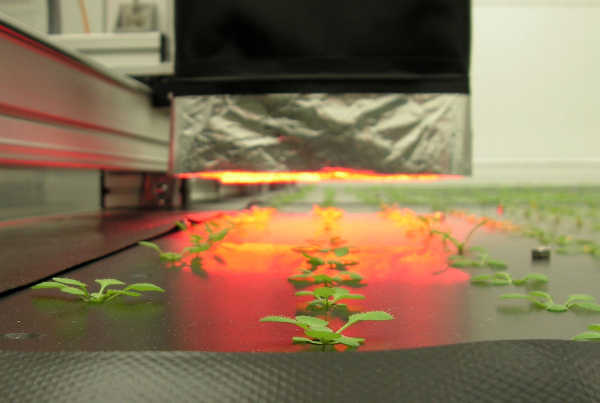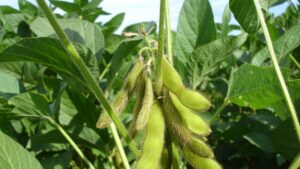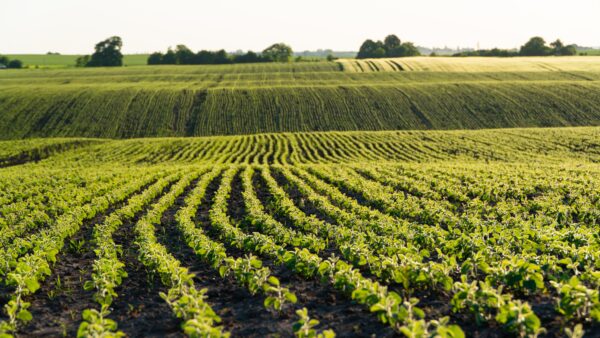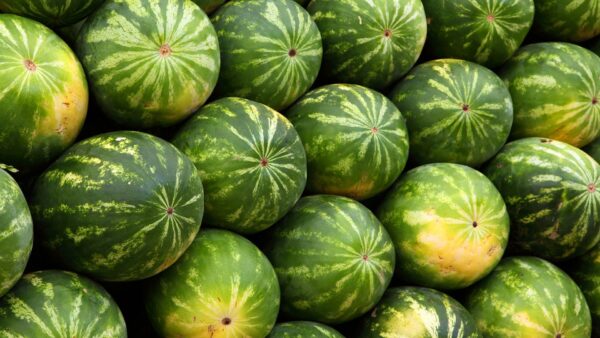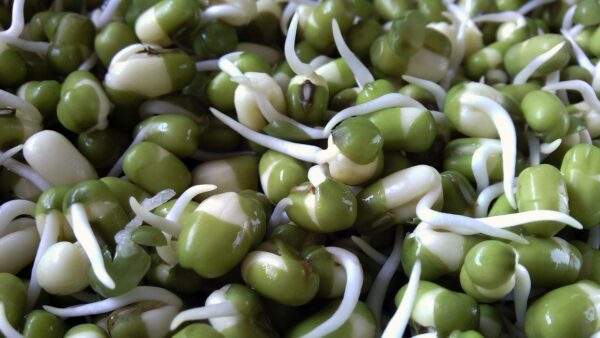Scientists from Wageningen University and Research Centre in the Netherlands (Wageningen UR) have developed the first ever method for accurately and simultaneously measuring the photosynthesis of nearly 1,500 plants over the course of several weeks. The method can help plant breeders more reliably select plants with an efficient photosynthesis.
The scientists published the method – which uses a high-tech image analysis robot called the Phenovator, designed by Wageningen UR – in the scientific magazine Plant Methods. In addition to photosynthesis, the robot also measures the growth and movements of plants throughout the day and night. Besides plant breeding research, the equipment has major potential for fundamental scientific research into the improvement of photosynthesis in plants.
The method enables the monitoring of 1,440 plants day and night, and involves the plants being photographed at various wave lengths of light, from deep red to blue, several times a day. The extent to which the chloroplasts, which are the cellular units that do the actual photosynthesis, respond to one specific wave length determines the effectiveness of the photosynthesis at that moment. The images captured at other wave lengths are used to measure the size and colour of all plants.
As all 1,400+ plants in the climate space are measured several times a day, the scientists can also determine the best moment to select plants with better photosynthesis. Moreover, the results are accurate and reliable, and reflecting the genetic potential of each plant, as the ambient conditions in the climate space can be carefully controlled.
The measuring equipment also facilitates new fundamental research into issues such as the heredity of photosynthesis. Because so many plants are monitored, it is possible to specifically search for the genes that are relevant to photosynthesis. In addition, the Phenovator can be used to study the influence of other processes on photosynthesis, such as changes in light intensity, temperature or drought, and which genes are involved therein.
These issues make the equipment valuable to research focused on improving the photosynthesis process. There is considerable international interest in this type of research as it is expected that better photosynthesis can help produce more food on the same amount of land. This is essential with the global population growing and the amount of suitable agricultural land declining.
During the development of the Phenovator some of the cooperating scientists established the company Phenovation, a Wageningen UR spin-off that develops and builds equipment for measuring chlorophyll fluorescence, a major indicator for photosynthesis.


